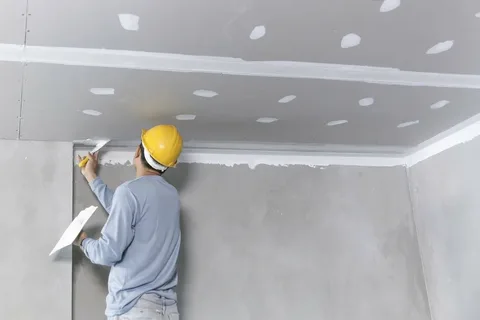In the United States construction industry, specification writing is one of the most critical yet underestimated aspects of project success. Clear specifications provide contractors, architects, engineers, and suppliers with the guidance they need to deliver a project that matches design intent, complies with regulations, and meets client expectations.
When done well, specifications reduce disputes, keep costs under control, and serve as a binding part of the contract documents. But even seasoned professionals can make mistakes that compromise quality or introduce costly risks. Knowing what pitfalls to avoid is just as important as learning how to write project specifications effectively.
Why Specification Writing Matters
Specifications are much more than technical paperwork. They act as the single source of truth for a construction project, setting standards for materials, workmanship, safety, and performance. Without strong specification writing, projects face:
- Costly contract disputes
- Misinterpretations among stakeholders
- Unclear project requirements
- Non‑compliance with building codes
- Delays resulting from revisions and corrections
For firms across the U.S., investing in professional specification writing services can help eliminate these risks by ensuring accuracy from design through handover.
7 Common Mistakes in Specification Writing
Even experienced spec writers can fall into these traps. Below are the most common mistakes, along with strategies to prevent them:
- Ambiguity and Vagueness
Vague terms like “high quality” leave room for interpretation. Such wording causes disputes between contractors and owners. The solution is precise, plain language. Define every technical term, specify measurable requirements, and avoid subjective phrasing. Tools such as this guide to construction specification terms can help clarify terminology.
- Outdated Information
The U.S. building industry constantly evolves—codes, materials, and methods change frequently. If specifications are outdated, they can cause failed inspections or rework. Staying up to date with industry reports, such as the Beyond the Specs Report 2025, helps spec writers align with the latest standards.
- Inconsistent Level of Detail
Too much detail stifles flexibility, while too little leaves contractors guessing. The right balance means setting firm performance expectations while allowing some choice in achieving them. A performance‑based approach works well—define outcomes rather than over‑prescribing methods.
- Poor Collaboration
Specification writing should not happen in isolation. Failing to involve architects, engineers, and contractors early can leave gaps in documentation. A well‑structured review process improves accuracy and ensures specifications align with designs.
- Compliance Oversights
Missing regulatory requirements—or referencing the wrong edition of building codes—can delay projects significantly. Every U.S. specification must be checked against local, state, and federal regulations. Consulting compliance experts during drafting helps mitigate risks.
- Lack of Risk Planning
Projects rarely go exactly as intended. When specifications do not anticipate issues such as supply chain delays, installation challenges, or warranty disputes, problems arise quickly. Proactive risk language and contingency planning should be built into documentation.
- Poor Formatting and Standardization
Non‑standard layouts confuse readers and make specs difficult to follow. Overly dense paragraphs discourage contractors from reading thoroughly. A structured format improves navigation. Many spec writers now use division‑based systems and modern software tools for consistency. Avoiding specification writing problems reduces these challenges dramatically.
Best Practices for Writing Strong Specifications
Avoiding mistakes requires a clear, proactive approach. These strategies can help improve outcomes:
- Understand the project scope: Collaborate with clients and design teams early.
- Keep wording simple and precise: Eliminate jargon while retaining technical accuracy.
- Use performance‑based requirements: Focus on outcomes while allowing flexibility for innovation.
- Include the right details: Document materials, codes, quality standards, and installation methods.
- Review and revise thoroughly: Multiple stakeholder reviews minimize errors before tender.
- Leverage industry standards: Align with recognized codes and guidelines to ensure compliance.
By investing effort upfront, spec writers strengthen documentation and build trust among owners, contractors, and design professionals.
Digital Tools and Technology in Spec Writing
Traditionally, spec writing was done manually through lengthy documents, making errors inevitable. Today, U.S. firms increasingly rely on digital workflows and collaborative platforms. These tools enhance outcomes by:
- Automating formatting and standardization.
- Providing built‑in reference libraries.
- Offering version control and real‑time collaboration.
- Integrating sustainability data and product updates.
Modern digital platforms make it easier for spec writers to work with multidisciplinary teams in one place—reducing omissions and errors.
Career Outlook: Rising Demand for Spec Writers
With growing project complexity and stringent compliance requirements, demand for qualified spec writers continues to rise. From healthcare facilities and aviation hubs to educational and hospitality sectors, every U.S. industry relies on accurate spec writing to meet client and regulatory expectations.
Individuals with strong technical knowledge, writing ability, and attention to detail find tremendous opportunities in architecture, engineering, and consulting firms. The industry is recognizing specification specialists as a distinct profession whose expertise directly influences project success.
Conclusion
Strong, consistent specifications are the backbone of construction. Common mistakes—ambiguous wording, outdated references, poor formatting, missed compliance, and limited collaboration—pose significant risks to U.S. projects. Fortunately, these issues can be avoided with proactive planning, collaboration, and the right tools.
By relying on structured formats, clear communication, up‑to‑date industry knowledge, and digital workflows, spec writers can produce documents that align stakeholders, reduce disputes, and control costs. And when teams need added expertise, professional spec writing services provide an invaluable safety net.
For firms seeking accuracy, risk reduction, and better collaboration, Aorbis offers proven solutions to turn specifications into a driver of success—not a source of problems.


